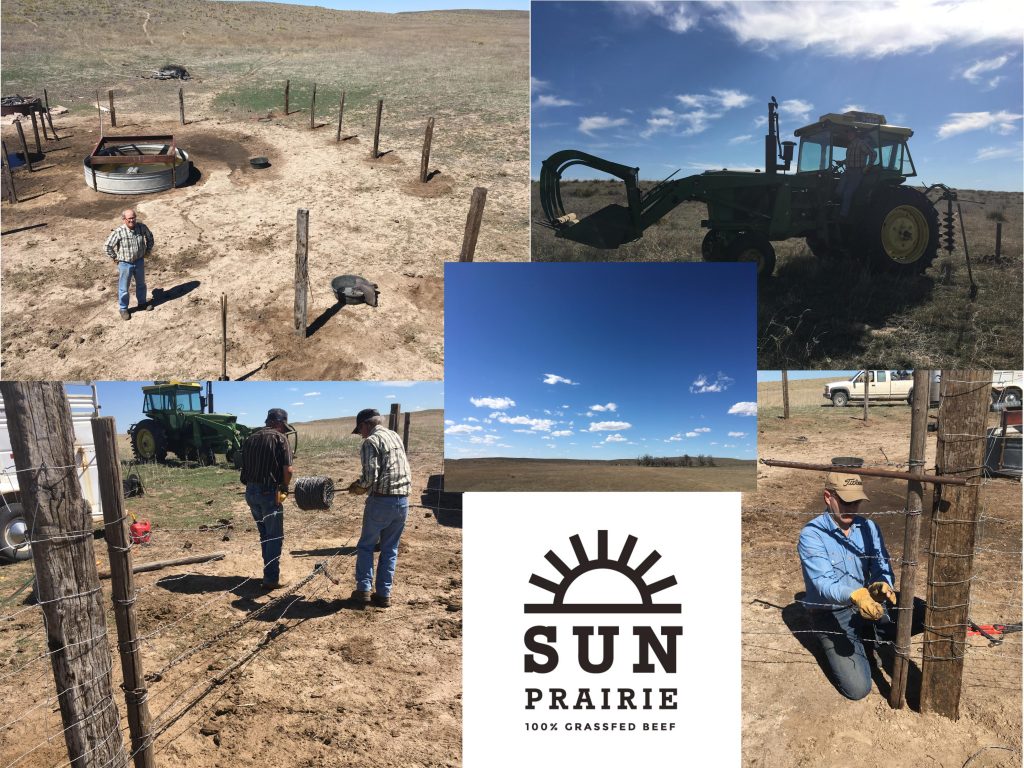Fence Work – The Dirt on Rotational Grazing

Every Spring, we do fence work. This year it was a 3-day affair – building four new paddocks, each with access to centralized water, to enhance our already robust rotational grazing program. Tom just felt it was the right thing to do to encourage nutritional grasses like little bluestem and switchgrass – best for the land, best for the animals. And, best for producing the best Colorado grass fed beef.
Our ranch is split in two – one in Yuma County and the other six miles away in Washington County. The latter parcel of 600 acres has been on single plot. You enter this parcel from a dead end dirt road, then through a neighbor’s property then through a barbed wire gate. In front of you is a wide flat expanse with gentle hills rising on the left and right. From here you see no human structures apart from fences – no buildings, no roads, no electric power poles and wires. It’s remote.
The parcel had been treated as a single large paddock. We would mob graze this with the entire herd in a matter of weeks, then move them back to the main ranch for nearly a year. But, even this left areas overgrazed and other under grazed, evident by low nutritional grasses like cheat grass while nutritional grasses like bluestem and switchgrass have expanded in others.
Tom’s idea is to concentrate grazing further and was the focus of 2019’s fencing project. We started by building a 50′ x 35′ rectangle fence around the water trough with four gates leading to four paddocks. When we arrived, the tractor that Tom had driven there the day before had a flat tire – so much for planning ahead! With no auger to help dig holes, we did it the old-fashioned way (and really the only way I’ve ever known) – by hand with a posthole digger. We dug 16 postholes for eight foot railroad ties sunk three feet deep. We hung 4ft high-tensile woven wire on this and built four five-wire gates (with barbed wire).
The next day, we build out the fences. From each corner of the water fence, we drilled holes with the now repaired tractor, tamped down wooden posts at every turn and bend, and eventually strung a single strand of electrical wire. In between the wood posts, we stepped in light fiberglass posts to hold the wire up. We tension the wire tight, hook up some switches to move the charge around the plot and pesto! we have four paddocks to move the cattle through.
The paddocks are not equal in size. We divided along the geography of the land. We separated the low plain from the hills noting the different grasses that grow in each geography. The cattle tend to focus their efforts on the hills, leaving the flats largely ungrazed. This doesn’t allow for any succession of species in the low areas. By concentrated the cattle, we will be better grazing of the entire paddock and (hopefully!) create an environment for natural succession of higher order species like switchgrass to grow down from the hills into the flats. It will be ten years or so in the making, but we are confident it will happen.
Ready to order some Colorado grass fed beef? Head to our Meat Market!
